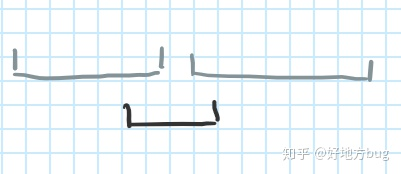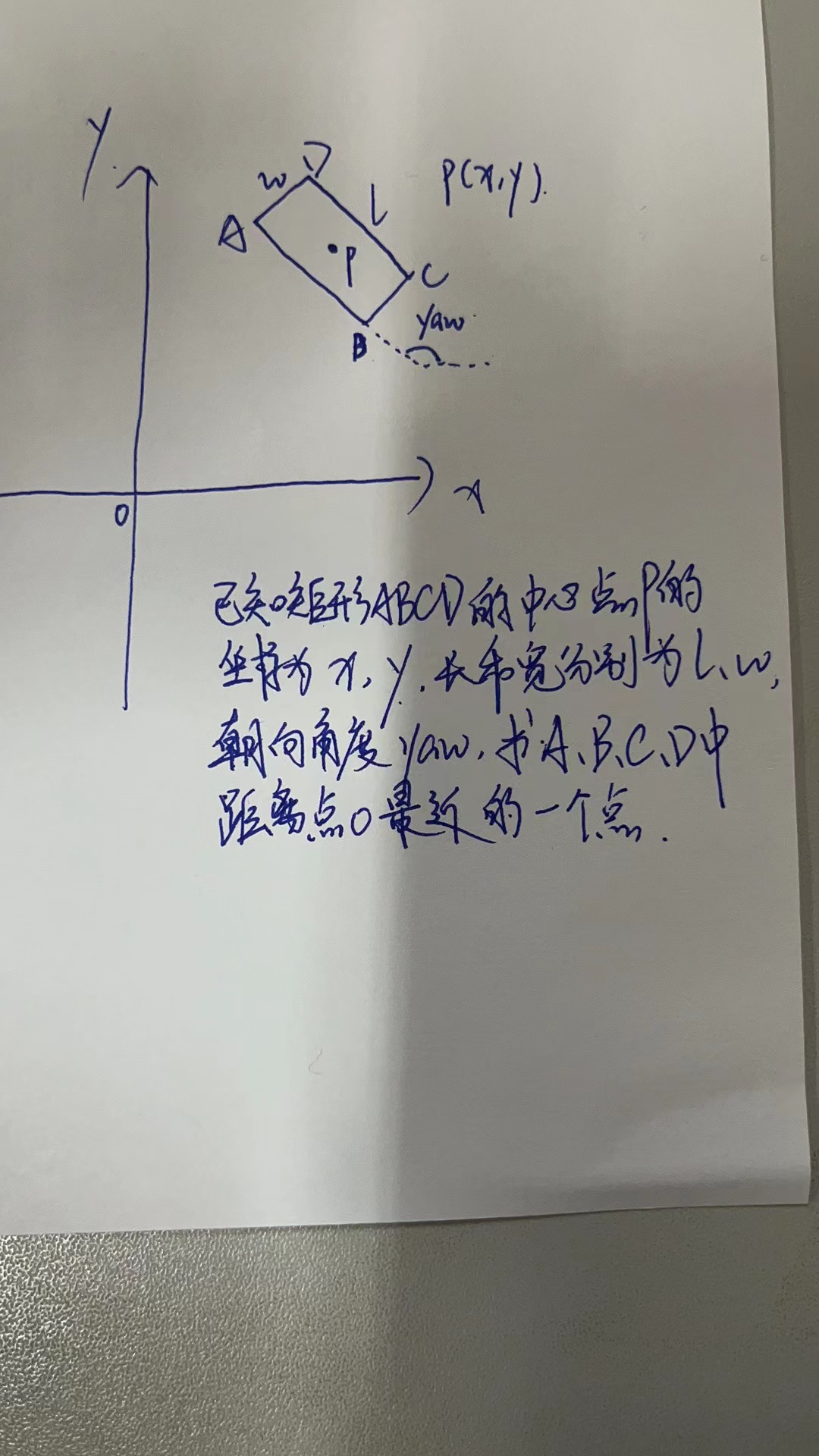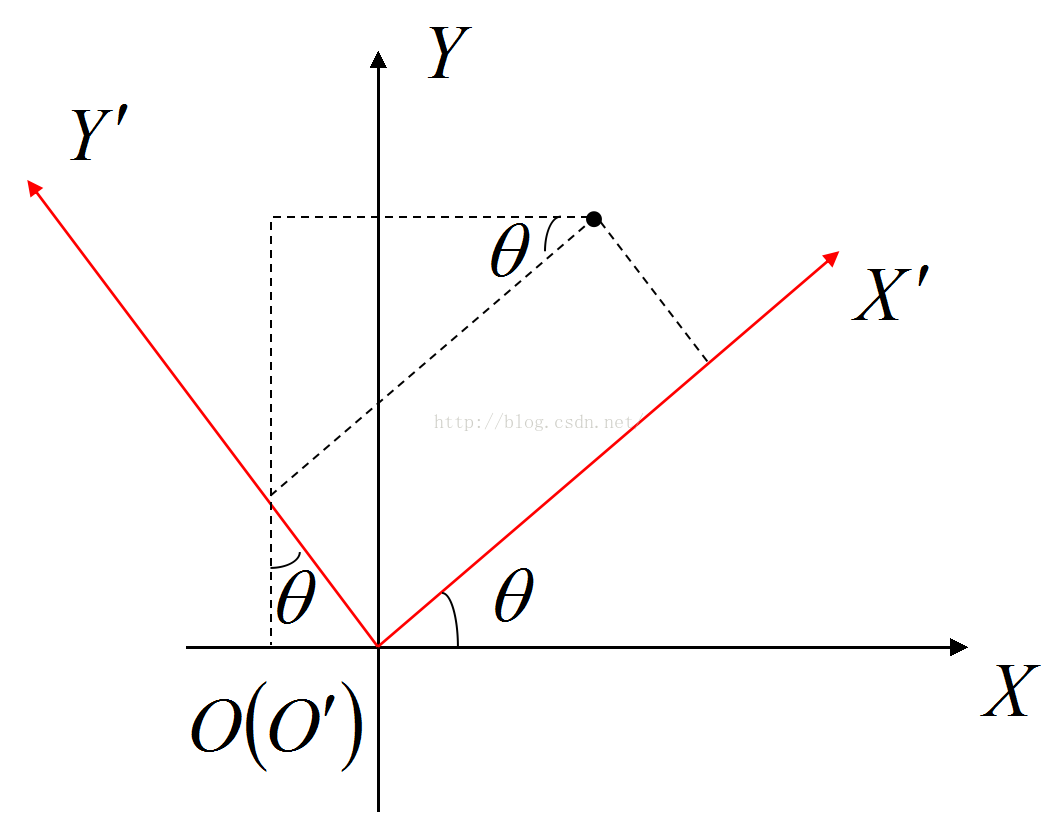线段重叠
1 | start1 <= end2 && end1 >= start2 |
矩形重叠面积
看过某司一道笔试题:给\(n\)个矩形左下和右上坐标(不能斜放),求重叠最多处矩形个数。
这道题本身不难:可以遍历所有矩形边界组成的点,计算该点被多少矩形包围,从而选出最大值。
由此引申出一个问题:判断两个矩形重叠。
- 如果正向思考,会有很多种情况:包含、重叠某个角、交叉...
那么如果逆向思考:什么情况两个矩形不重叠?无非就是\(A(p_1, p_2)\)在\(B(p_3, p_4)\)的上下左右: \[(p_1.y>=p_4.y)\vee(p_3.y>=p_2.y)\vee(p_3.x>=p_2.x)\vee(p_1.x>=p_4.x)\] 取反后用De Morgan's law化简就是重叠的情况: \[(p_1.y<p_4.y)\wedge(p_3.y<p_2.y)\wedge(p_3.x<p_2.x)\wedge(p_1.x<p_4.x)\]
1 | struct point { |
线段交点
联立方程组求解当然没问题,也可以用几何的方法解:
易知,\(\frac{AO}{BO}=\frac{AE}{BF}=\frac{S_{ACD}}{S_{BCD}}\),两个三角形面积可以用叉积求得,又\(\vec{AO}=\frac{AO}{AB}\vec{AB}=\frac{AO}{AO+BO}\vec{AB}\),所以\(\vec{O'O}=\vec{O'A}+\vec{AO}\),即可求得\(O\)点坐标。
线段覆盖
有若干线段\([l_i,r_i]\)以及目标线段\([a,b]\),需要用尽可能多的线段去覆盖目标线段,且线段之间不相交,线段长度之和最小。
直观上看:我们的策略首先以长度为准则:显然不妥,选了黑的就不是最优

按照起始点:

按照结束点:最优

从前向后取区间,最小化对后面的影响,选择最早结束的区间。
向量旋转
三角变换可得: \[\vec
b=(xcos\alpha-ysin\alpha,ycos\alpha+xsin\alpha)\]
多边形面积
三角剖分: \[S_{ABCDEF}=\frac{\vec{OA}\times\vec{OB}+\vec{OB}\times\vec{OC}+...+\vec{OF}\times\vec{OA}}{2}\]
即: \[S=A_n\times
A_1+\sum_{i=1}^{n-1}A_i\times
A_{i+1}=x_ny_1-y_nx_1+\sum_{i=1}^{n-1}x_iy_{i+1}-y_ix_{i+1}\]
凸包
包围所有给定点并且周长最小的多边形。

直接求不好算,需要旋转坐标轴:


1
2
3
4
5
6
7
8
9
10
11
12
13class Solution:
def cloest(self, x, y, l, w, yaw):
# 原始坐标系逆时针旋转theta = yaw - 90得到坐标系(xx,yy)
theta = math.radians(yaw - 90)
xx = x * math.cos(theta) + y * math.sin(theta)
yy = -x * math.sin(theta) + y * math.cos(theta)
points = [(xx + w / 2, yy + l / 2), (xx - w / 2, yy - l / 2), (xx + w / 2, yy - l / 2), (xx - w / 2, yy + l / 2)]
dis = [a ** 2 + b ** 2 for a, b in points]
ans = points[dis.index(min(dis))]
ans_x = ans[0] * math.cos(theta) - ans[1] * math.sin(theta)
ans_y = ans[0] * math.sin(theta) + ans[1] * math.cos(theta)
return ans_x, ans_y
reference 洛谷日报#142 计算几何初步

